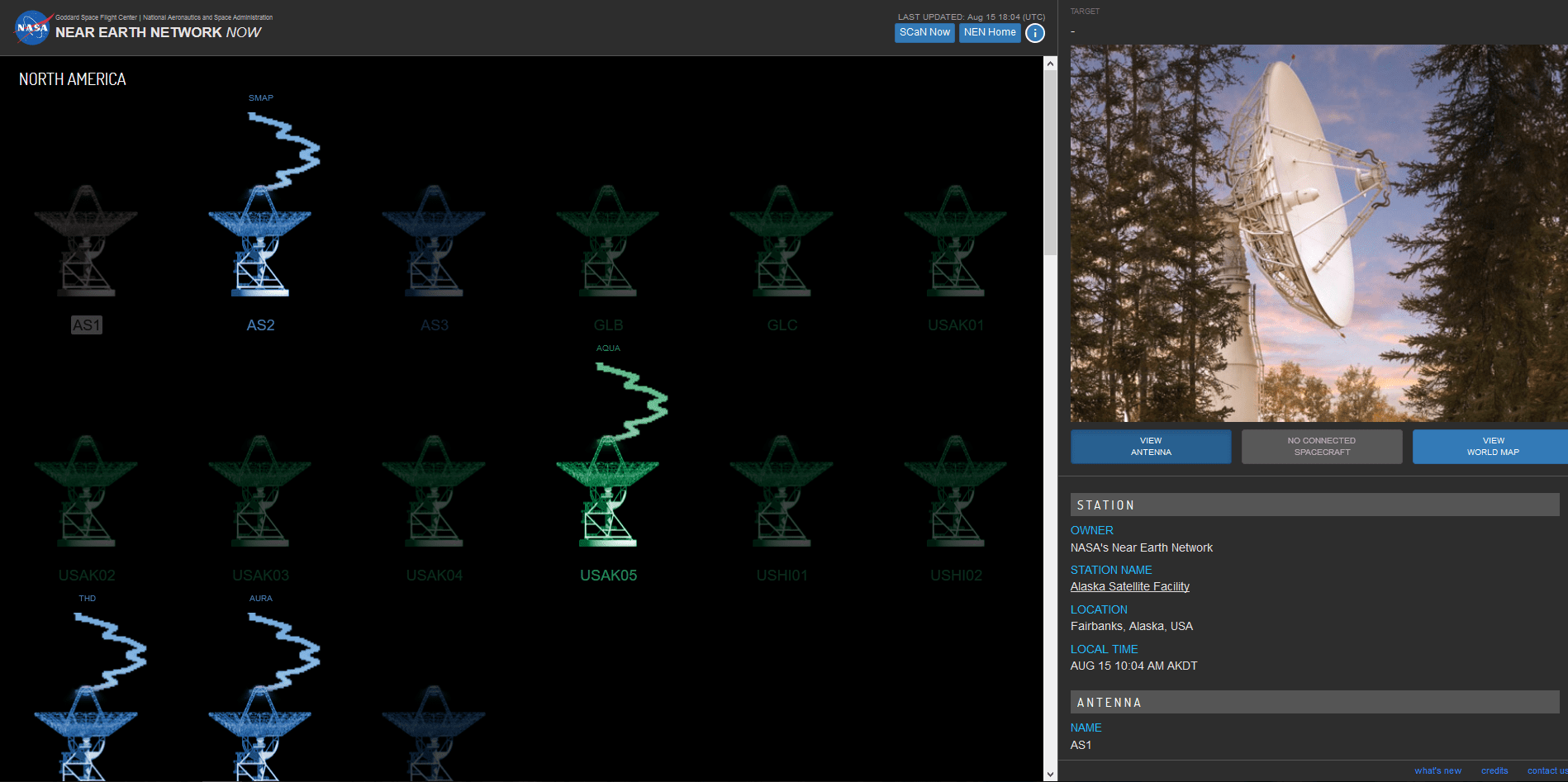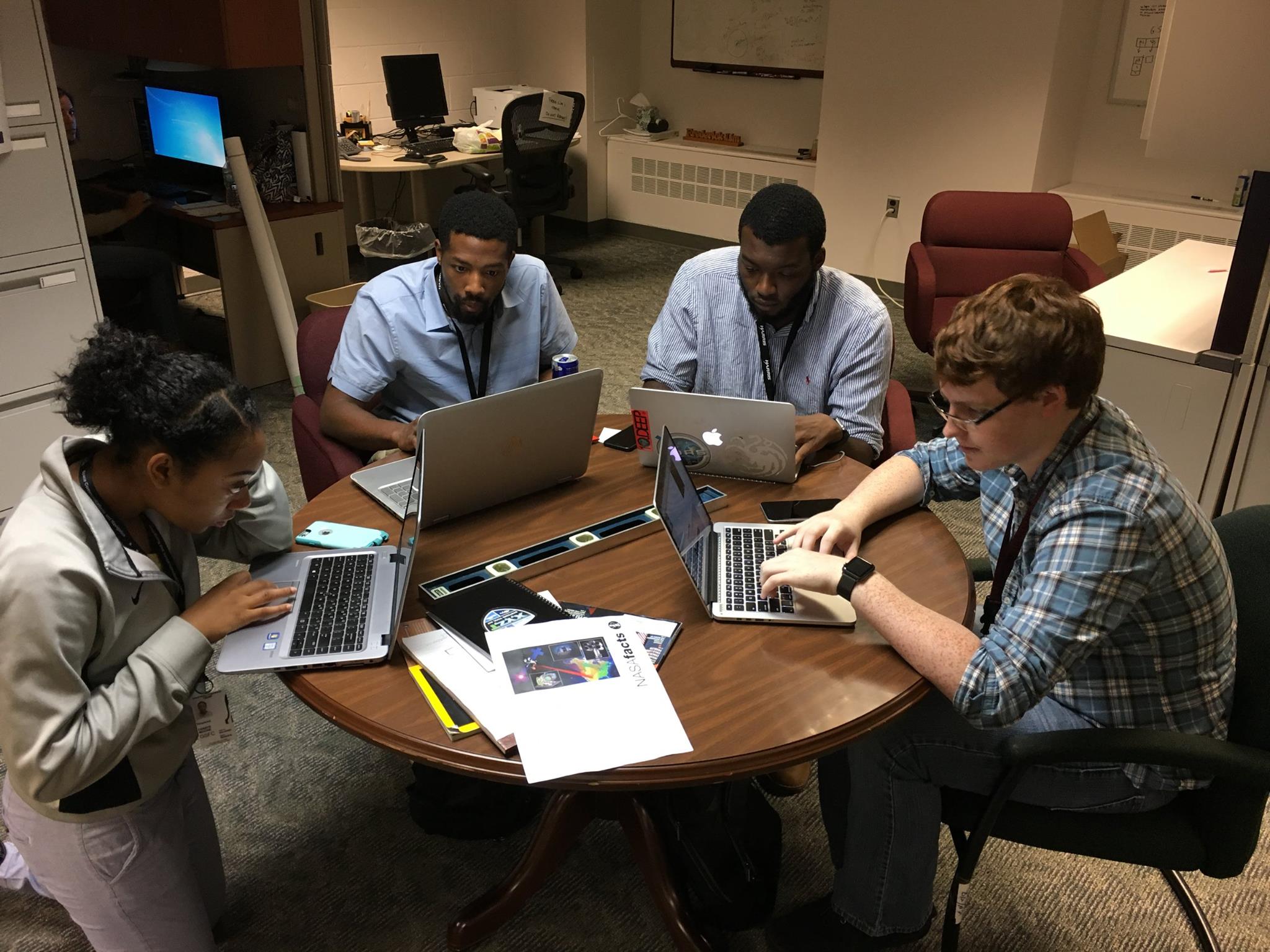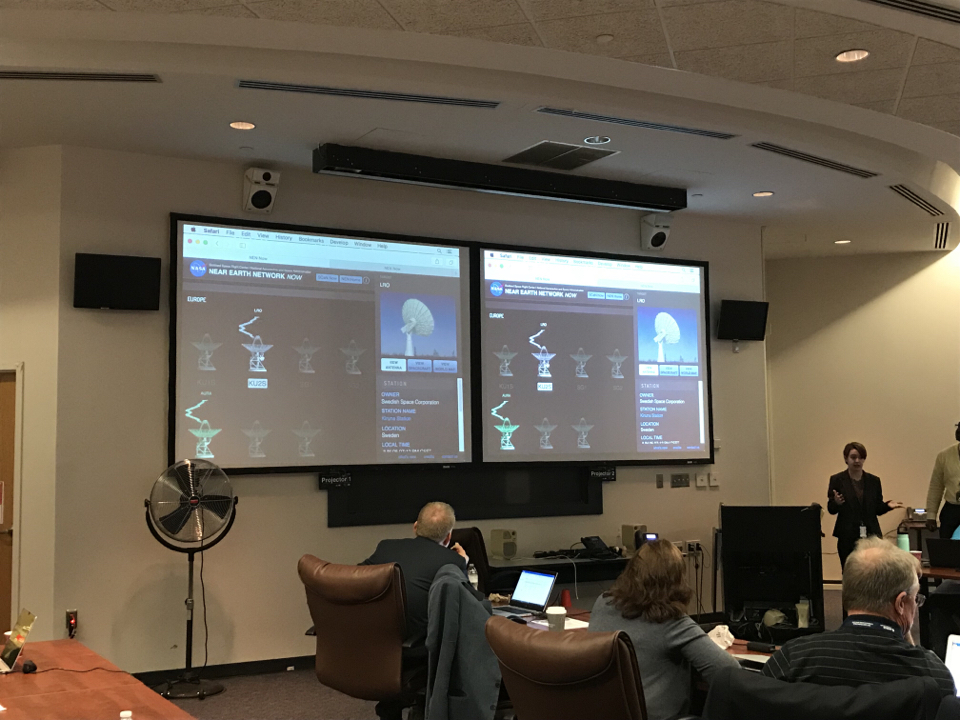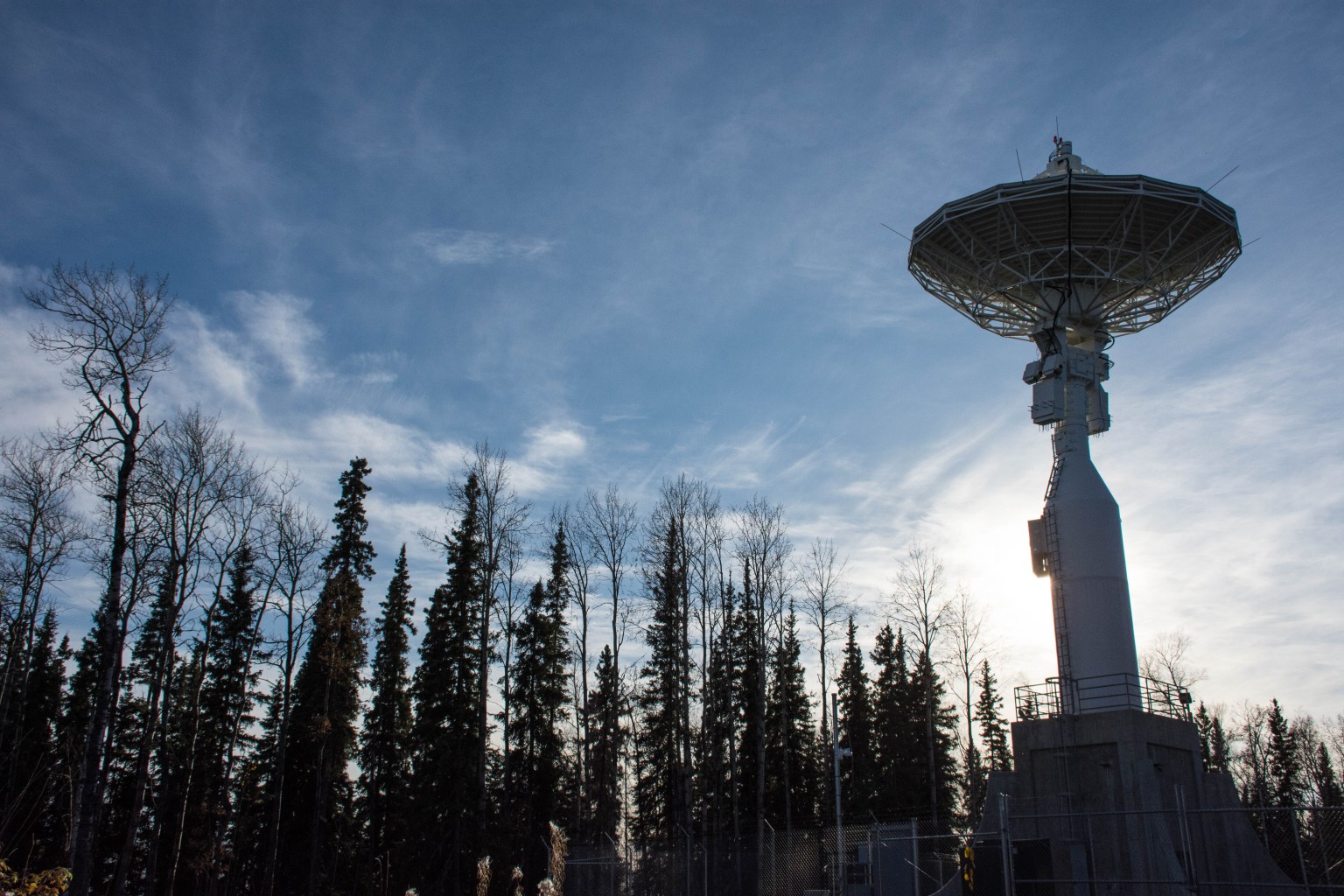For the first time ever, people worldwide can get an inside look into what it takes to enable communications for nearly 40 NASA missions, thanks to a small team of college students.
NASA’s Near Earth Network (NEN) leverages more than 15 antennas across the globe to provide a downlink for critical space and Earth science data collected by the agency’s satellites. A new web-based app called NEN Now shows, in real time, simulations of the complicated maneuvers these antennas undergo to link with passing satellites, following them from horizon to horizon as the data streams to the ground.

“NEN Now opens a window to the public, sharing live updates about which of NASA’s spacecraft are communicating with the Near Earth Network,” said Barbara Adde, director of policy and strategic communications for the Space Communications and Navigation (SCaN) program office at NASA Headquarters. “Curious about what NASA is studying? You can click on a link and find out what research that spacecraft is collecting data for and sending down to Earth right at that moment.”
Not only will NEN Now help the public understand space-to-ground communications systems, but the tool will help technical and project managers monitor the status of the network in detail, providing information such as the actual position of the antennas’ dishes.
At SCaN’s request, Goddard modeled NEN Now after a similar app, called DSN Now, built by NASA’s Jet Propulsion Laboratory in Pasadena, California, for the Deep Space Network (DSN). The DSN provides communications services for missions in deep space and is managed by JPL.
Ryan Turner, a ground system manager, had an idea to efficiently and effectively develop the NEN app at Goddard by leveraging the skills of college students and utilizing experienced engineers to provide guidance.

“We started with three interns, who worked with the public engagement team, NEN engineers and the GMSEC to lay out a prototype,” Turner said. GMSEC is the Goddard Mission Services Evolution Center, which creates data system solutions across multiple projects and disciplines. “It gave everyone a sense of what would be possible if we created an operational version of the system.”
Naje Fields was one of the first interns on the project in summer 2015. “Our biggest challenge for the prototype phase was to figure out how to get the data from the real-time status server at [NASA’s Wallops Flight Facility in Virginia] to Goddard and into our app,” she said. She and her partners, Kierra Harrison and Wallace Phillips, used a number of networking and security techniques to make it happen.

The prototype might have been ambitious for three college interns to complete over the course of 10 weeks, but it was very well-received, allowing Turner to establish a year-round program and to take on more interns in the following summers. Those groups have worked on multiple projects, including adding commercial ground stations to NEN Now, implementing a NEN Now mobile app, designing the Space Network (SN) Now for Goddard’s other communications network, and developing a 3D interface for NEN Now.
NEN Now is now available to the public. Both NEN Now and DSN Now have been incorporated into a larger app called SCaN Now. An additional application for SCaN’s third network, the Space Network, is also being created by this intern team, rounding out the real-time status display capability for all three of SCaN’s communications networks.
The following interns worked on the NEN Now project. All are computer science majors except where otherwise noted.
- Ezra Brooks, Capitol Technology University, Laurel, Maryland
- Kamilah Carlisle, University of Maryland, College Park, Maryland
- Naje Fields, Morgan State University, Baltimore, Maryland
- Andrea Garcia, Springbrook High School, Silver Spring, Maryland
- Kierra Harrison, computer science/information assurance major, Capitol Technology University, Laurel, Maryland
- Mica Ho, University of Maryland, College Park, Maryland
- Melchi Mashiku, Georgia State University, Atlanta, Georgia
- Anjali Mittu, computer science/astronomy major, University of Maryland, College Park, Maryland
- Fanaye Moore, Tuskegee University, Tuskegee, Alabama
- Wallace Phillips, animation major, School of Visual Arts, New York, New York
- Emily Ragan, Capitol Technology University, Laurel, Maryland
- Aliyah Shah, University of Maryland, College Park, Maryland
- Will Varner, Capitol Technology University, Laurel, Maryland
By Ashley Hume
NASA’s Goddard Space Flight Center, Greenbelt, Md.


























